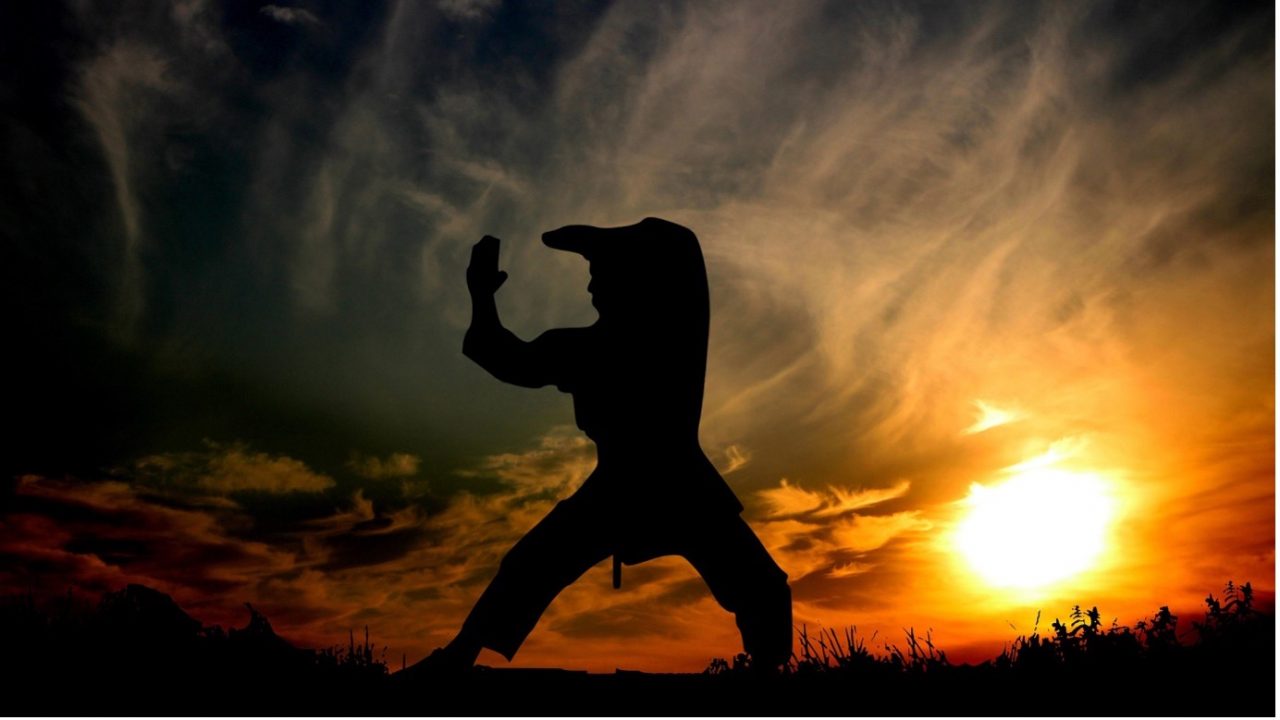Mastering martial arts calls for a substantial investment of time, focus and energy. Regular practice of basic fundamental techniques is an absolute must to attain mastery in any style of martial art.
Similar to becoming skilful in any other competitive sport, becoming a highly trained martial artist takes commitment.
Disciplines of martial arts include striking techniques, footwork and movement, grappling, joint locks, partner drills and sparring, all of which help a student learn the necessary skills to effectively defend themselves in real-life situations.
Most practitioners of martial arts attend classes, and it is well known that learning in a group environment is unparalleled.
Having an experienced instructor who can encourage a student and praise their progress whilst also correcting technique, sharing personal experiences and helping beginners learn from their own mistakes empowers practitioners, and can lead to faster progression.
Through rigorous training, the pupil’s body and mind are conditioned, increasing mental clarity, focus and discipline.
Many of the mental skills gained through martial arts training can also help with other stressful situations in our day to day work or school lives.
Martial Artists are AWESOME!
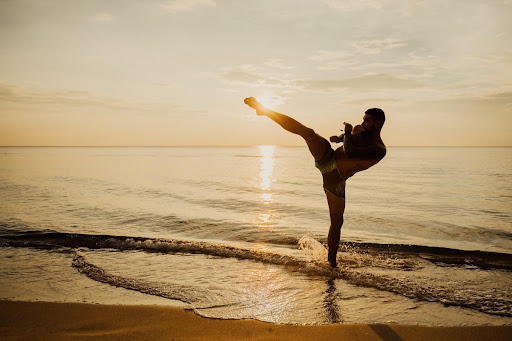
I am sure many of us are inspired when we see an experienced martial artist impress us with their high-flying kicks, innovative sweeps or swift punches, the timing, grace and speed are without a doubt remarkable.
In spite of the wonderful strategies, veteran martial arts professionals make use of, certain martial arts techniques are less intimidating to learn for a beginner, and are far easier to implement.
Whilst training at a school or dojo is an ideal way to obtain new skills in martial arts, there are certain techniques that can be easily performed or practised in one’s home.
Online educational videos supply many of the same advantages as in-person classes, however, online programs lack the vital element of tailored instruction. Still, pupils can pick up great easy to learn self-defence strategies as a basis, and then branch out and join a martial arts school at a later date.
Whilst new trainees that already have a limber or flexible body will have an advantage in learning martial arts, anyone can vastly improve their flexibility, coordination, balance and strength through martial arts training.
The one thing that all advanced martial artists have in common is that they are extremely disciplined.
It goes without saying; martial arts students who already have self-discipline will grasp the techniques of certain styles more easily.
Below is a Martial Arts disciplines list of styles that I would recommend for beginners:
1). Kung Fu
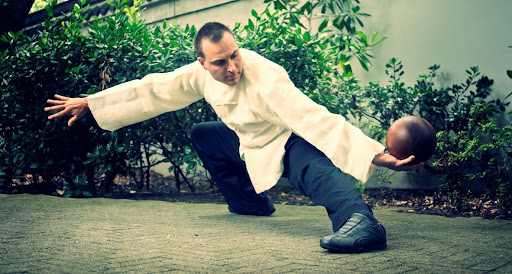
Kung Fu has many different styles, some of which require a large degree of athleticism, and include many high kicks and flying techniques, whilst other styles are more ‘grounded’ in their approach, and use realistic self-defence skills that can be easily learned and applied.
Although it may be tempting to learn one of the more flamboyant styles that we often witness in Hollywood movies, as an experienced practitioner with many years of actual combat experience, I would suggest learning a more practical style of Kung Fu, to begin with, that focuses on strikes with fists and elbows, and low kicks that don’t require extreme flexibility.
Once you have mastered the fundamental skills of practical Kung Fu and have improved your flexibility, you can then take on more advanced techniques.
Wu Xing Dao Kung Fu is a traditional martial art that specialises in simple techniques that are easy to learn and help you to rapidly increase your speed and power, through the generation of internal energy. We offer both in-person learning via small group and private instruction, and online courses that can teach many of the vital aspects of martial arts for beginners.
2). Karate
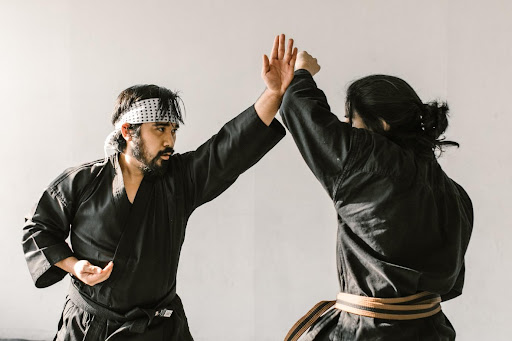
Karate is a diverse fighting discipline that is very popular across the world, with many schools available in most areas.
It is a popular style with children as well as older adults, who are drawn to Karate due to it being a relatively safe learning environment, and an easy to access form of martial art.
Karate usually attracts a diverse range of ages, many of which can participate in the same class environment.
The discipline still requires proper instruction of technique to ensure it is effectively performed. The theory is essential, as is a breakdown of the forms including practical applications.
Martial artists generally consider an art like Karate to be very adaptable, simple to learn, and when applied correctly, very efficient for self-defence.
Methods indispensable to karate include striking with the hands (open hand and closed fist) elbow strikes, kicks (such as roundhouse kicks and front kicks) and a regime of sparring to apply techniques learned.
In order to improve stamina through sparring, a companion of a similar experience level is recommended, as competing aids trainees to work out the proper distance and timing of techniques in actual combat.
Karate relies on strong balance, speed, and power. A number of basic movements that are essential to karate can be conveniently learned online. These include several stances, strikes and footwork, which can be a great foundation for a beginner.
3). Boxing
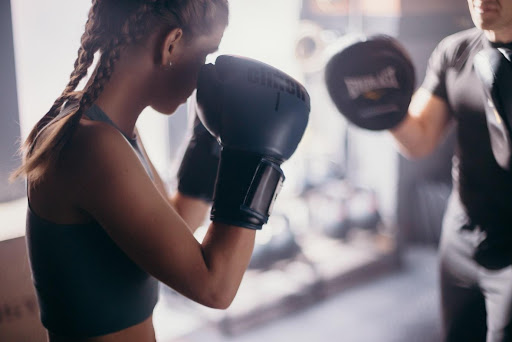
A popular sport that is also useful for self-defence is boxing. Although it is primarily known as a sporting activity, the basic punches, head movement and footwork can be practised alone, even though as with all martial arts, to work on timing and properly judge the appropriate distance for strikes, it is better to have a sparring partner.
As boxing students progress, they become more nimble on their feet, and likewise, come to realise their stamina potential. Not a lot of equipment is required to begin practising boxing. A new practitioner only requires a pair of gloves and possibly a heavy bag for striking practice, but the fundamental techniques can be accomplished without gear.
Like Kung Fu and Karate, boxing involves stances. The reason that a solid stance is key in boxing (and all martial arts for that matter), is that true power stems from assuming a proper fighting stance.
A good stance and proper coordination are essential to maintain balance when throwing punches, and as a practitioner continues their training, these skills become intuitive and automatic when sparring.
4). Muay Thai
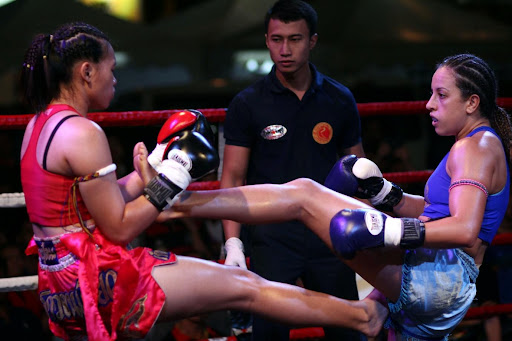
The entire body is a tool in the martial art referred to as Muay Thai.
Understanding Muay Thai arms even novice students with simple skills that are important for self-defence. Although sparring is the primary method of practice for this fighting style, as with boxing, most of the basic techniques can be learned without needing a partner.
Equipment the student will require include a set of boxing gloves, a large punching bag (preferably 6 feet long to allow for kicking practice), and if sparring with someone is a possibility, shin guards, which are designed to reduce the risk of injury from shin clashes during practice.
Strategies indispensable to Muay Thai include punches, knee strikes and kicks. These steps become much easier to execute as the student matures.
5). Krav Maga

Krav Maga is a mix of different martial arts styles including Boxing, Judo and Muay Thai, as well as grappling and self-defence techniques for altercations in the street.
The fighting strategy of Krav Maga is focused on the goal of delivering sufficient damage to the opponent so the confrontation is swiftly finished.
People who train from home will get a more effective workout using some equipment, for example, a pair of boxing gloves and a heavy bag, and if training with a partner, Muay Thai shin guards to reduce the risk of injury.
Regular practice in Krav Maga aids a student in acquiring valuable skills for self-defence.
Courses that train the skills of Krav Maga concentrate on correct stances and footwork, boxing punches such as the jab, cross and upper-cut, escaping from common holds such as headlocks, correct ways to break your fall in the event of being thrown, and ways to resist chokes, bear hugs, and other common wrestling moves.
6). Jiu-Jitsu
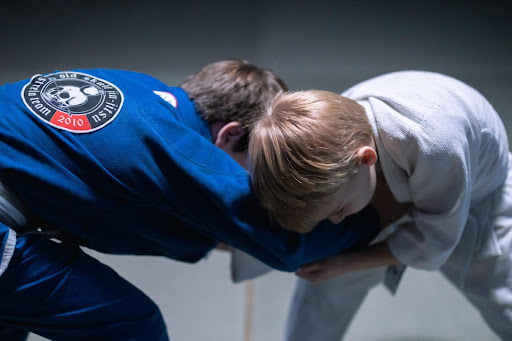
Jiu-Jitsu is a powerful type of martial art that was created so that a smaller competitor has adequate physical resources to effectively resist a bigger challenger.
The unfortunate reality of learning the techniques of Jiu-Jitsu is that if it is practised alone, techniques may be difficult to prepare for. A companion aids the student to understand whether the technique being applied is effective, as many of Jiu-Jitsu’s techniques involve joint locks and throws, requiring pain compliance and submission, that can only be determined by cooperating with a partner.
In Brazilian Jiu-Jitsu, trainees primarily use ground-fighting strategies over stand-up manoeuvres. Students use chokes (for example the guillotine choke or triangular choke), joint-lock manipulations as well as single or double-leg takedowns to beat larger opposition.
Although it is possible to learn the techniques of Jiu-Jitsu or Brazilian Jiu-Jitsu from home, unlike many of the other styles discussed, it will be essential to have a training partner to practice this style.
If you want to learn more about martial arts, check out Wu Xing Dao Kung Fu. At Wu Xing Dao Kung Fu, we are keeping the spirit and traditions of Martial Arts alive, and sharing the training methods with the next generation of Martial Arts practitioners.
To learn more about Wu Xing Dao Kung Fu and other martial arts, please call us today on 0410 249 217 or leave a message and we’ll get back to you ASAP.


